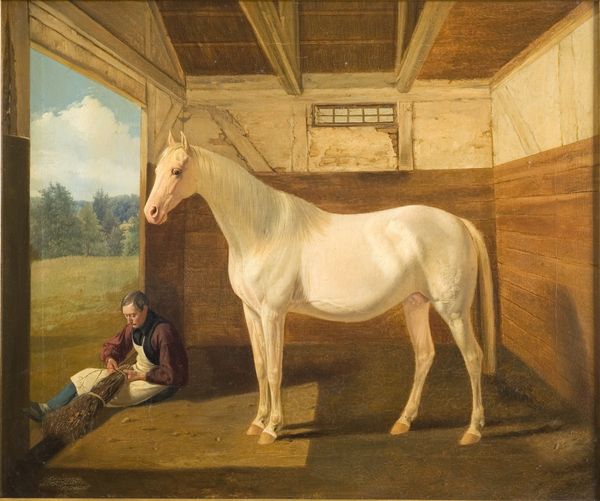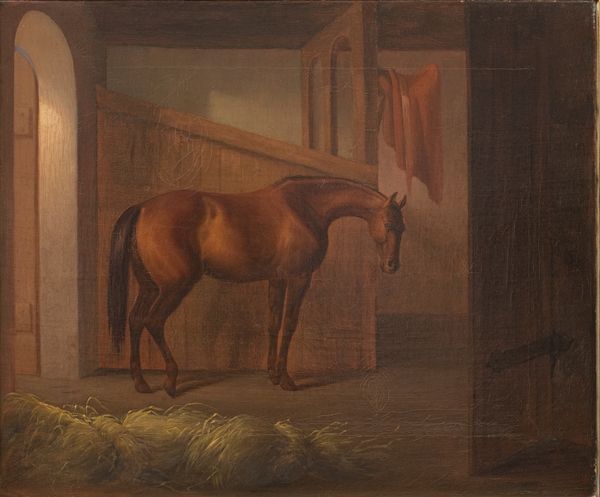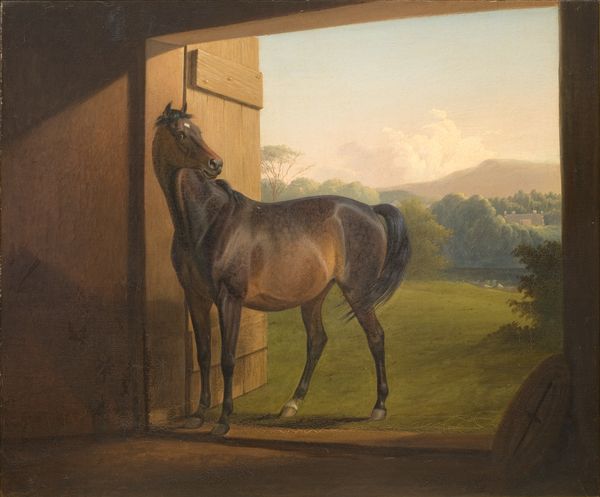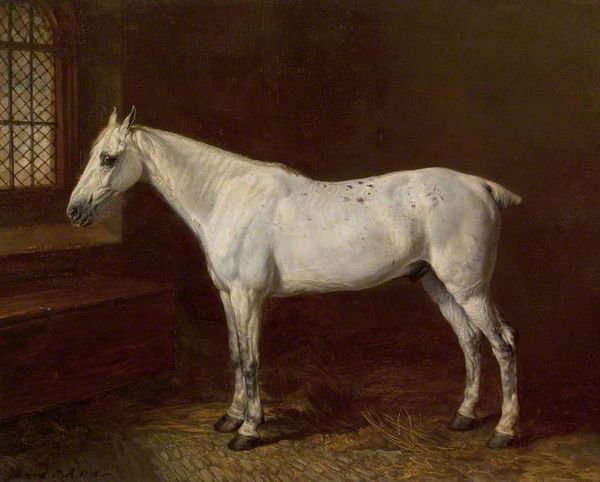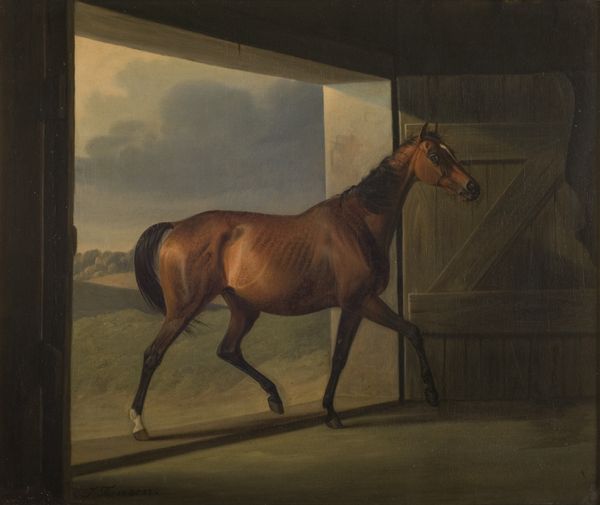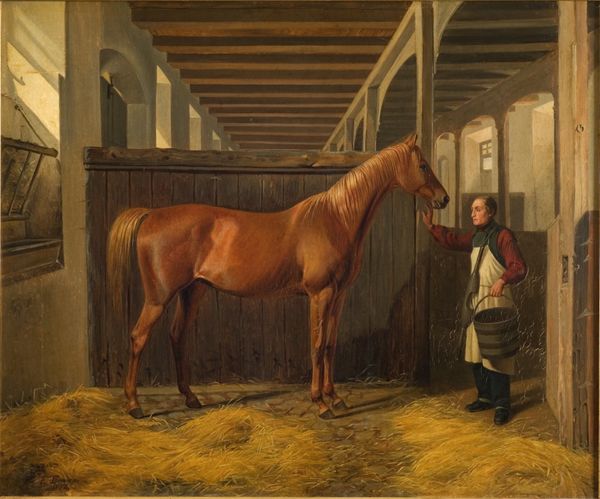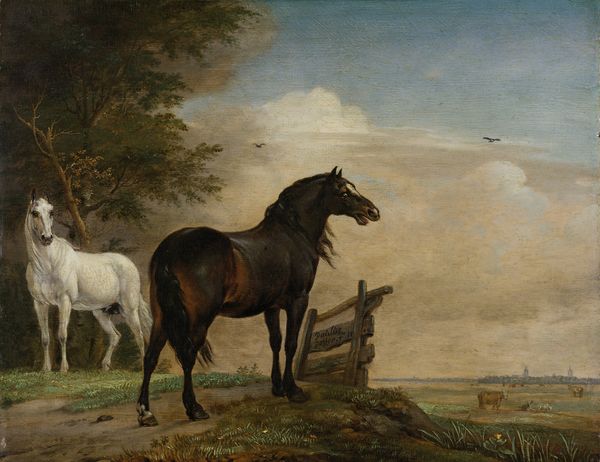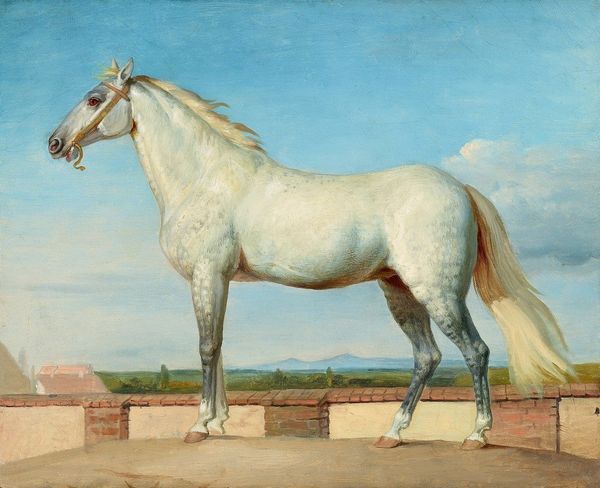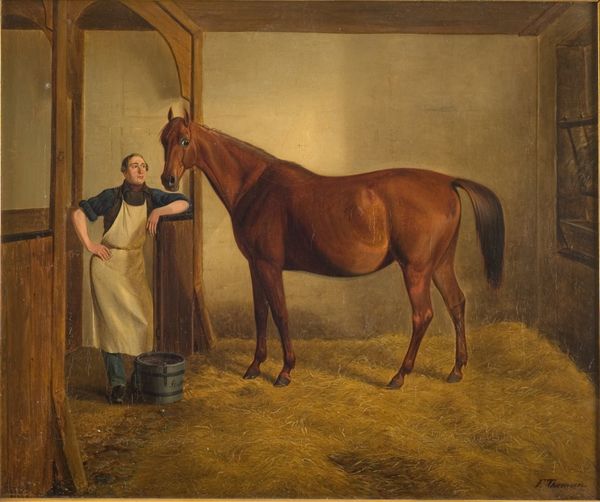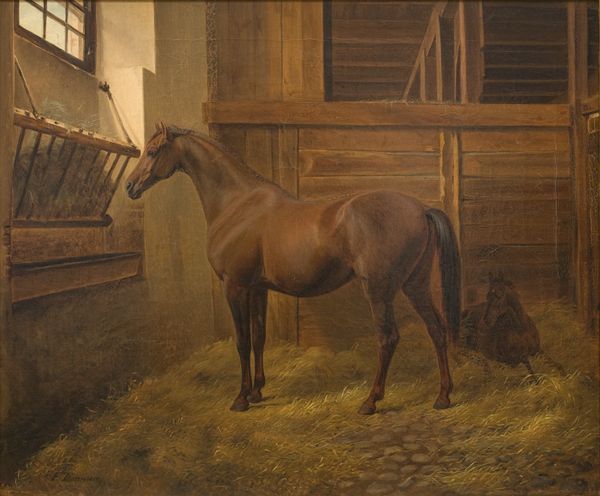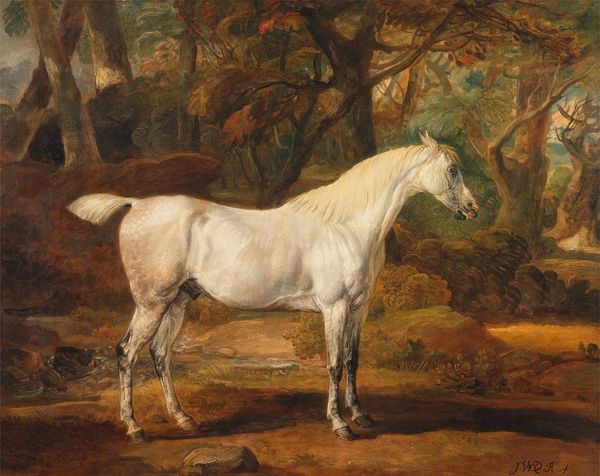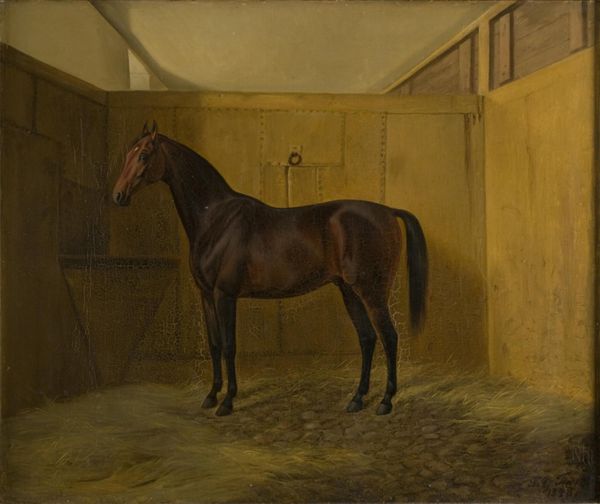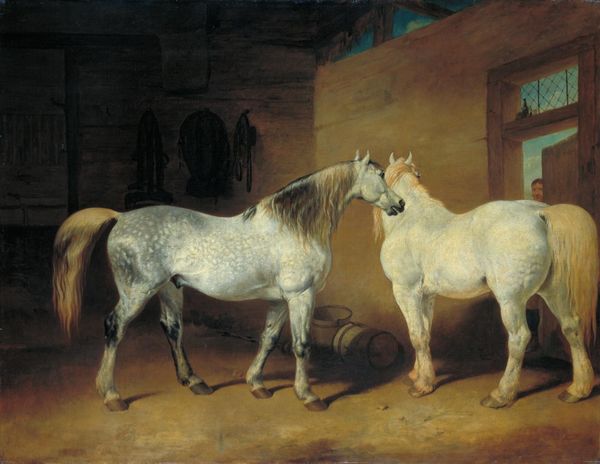
painting, oil-paint, oil-on-canvas
#
portrait
#
animal
#
painting
#
oil-paint
#
landscape
#
oil painting
#
romanticism
#
genre-painting
#
oil-on-canvas
#
watercolor
#
realism
Dimensions: 34 × 39 15/16 in. (86.5 × 101.5 cm)
Copyright: Public Domain
Curator: Looking at Benjamin Marshall's "The Earl of Coventry's Horse," painted in 1805, one immediately senses the burgeoning Romantic aesthetic. Editor: Yes, but more than that, the first thing that strikes me is the stark contrast. The luminous horse against the dim interior, the smooth coat against the rough wooden beams. There's a real sense of tension between different worlds, literally a figure "boxed-in" the constrains of animal domesticity. Curator: Precisely, Marshall was quite renowned for his animal portraits. This particular work offers a glimpse into the social fabric of the British gentry, where equestrian pursuits were paramount, status symbolised. Note the detailed rendering of the horse; its musculature and gentle pose suggests an ideal. The very act of memorializing animals in this way underscores their elevated social positioning. Editor: The elevated position, sure. But look closer—the light feels almost like a stage spotlight. The horse may be valued, but is trapped under a male-dominated vision that favors pedigree, class and ownership and perpetuates the system. The barn suggests confinement; the shadowy areas hints a sense of anxiety. I also wonder what message we receive from the hidden animal figures—such as the possible fowl in the top corner or the feline, located on the other side of the frame? What are their purposes in relationship to the featured horse subject? Curator: Fascinating, and consider this: sporting art became incredibly popular at the time and served as visual documents of breeding and lineage and helped cement the socio-economic status quo in agricultural England. Editor: Agreed, but it also becomes an important visual documentation of the treatment, roles, expectations and lives of animals. These figures become subject to their "masters" while revealing insights to their inner worlds. Curator: This painting serves as a reminder of how artistic depictions can both mirror and reinforce power structures, providing fertile ground for examining our values of both humans and animals in this moment of the 19th Century. Editor: Absolutely. Reflecting on "The Earl of Coventry's Horse," it becomes more than just a portrait—it's an examination of place, positionality and what the terms freedom and constraint means to all its members.
Comments
No comments
Be the first to comment and join the conversation on the ultimate creative platform.
